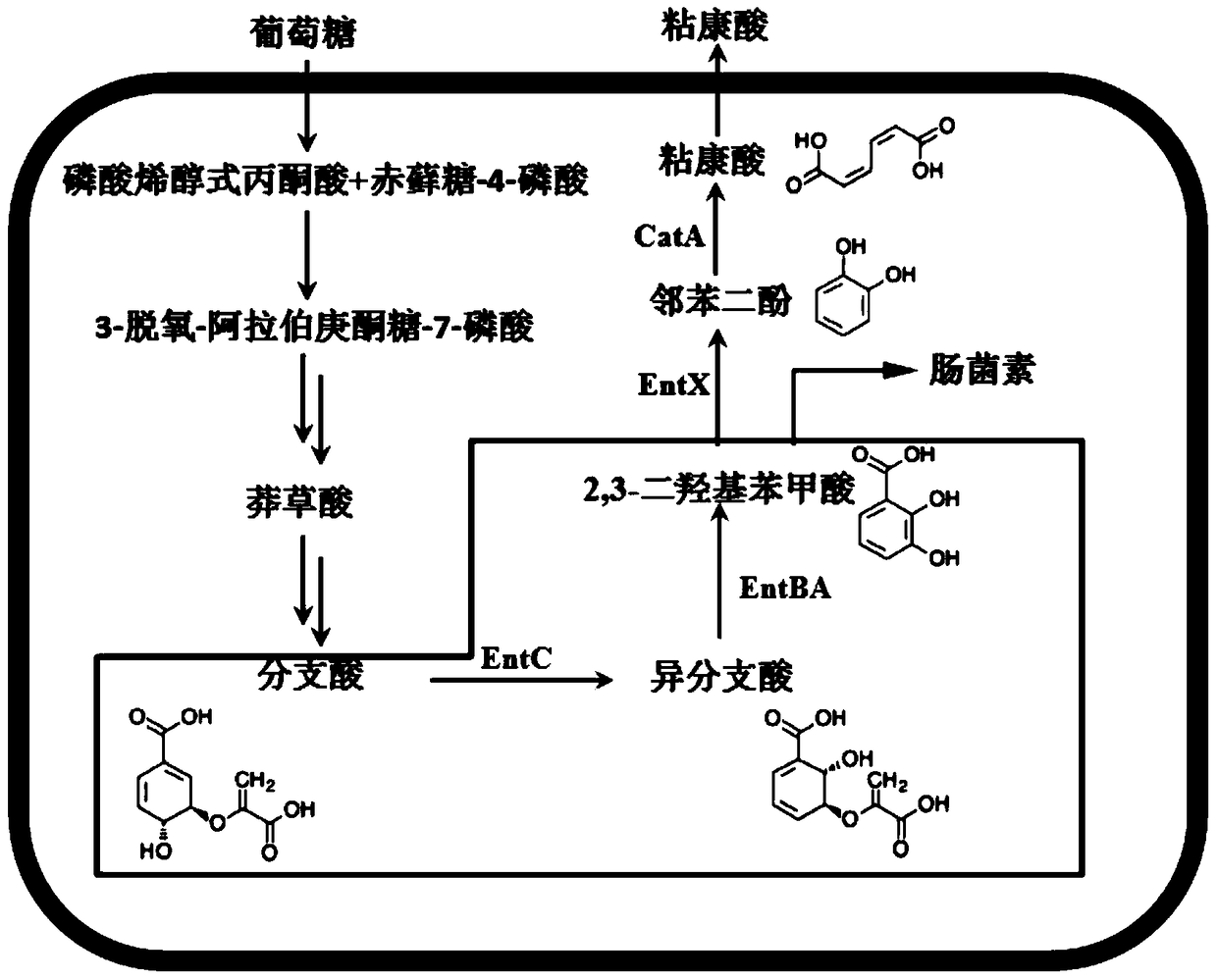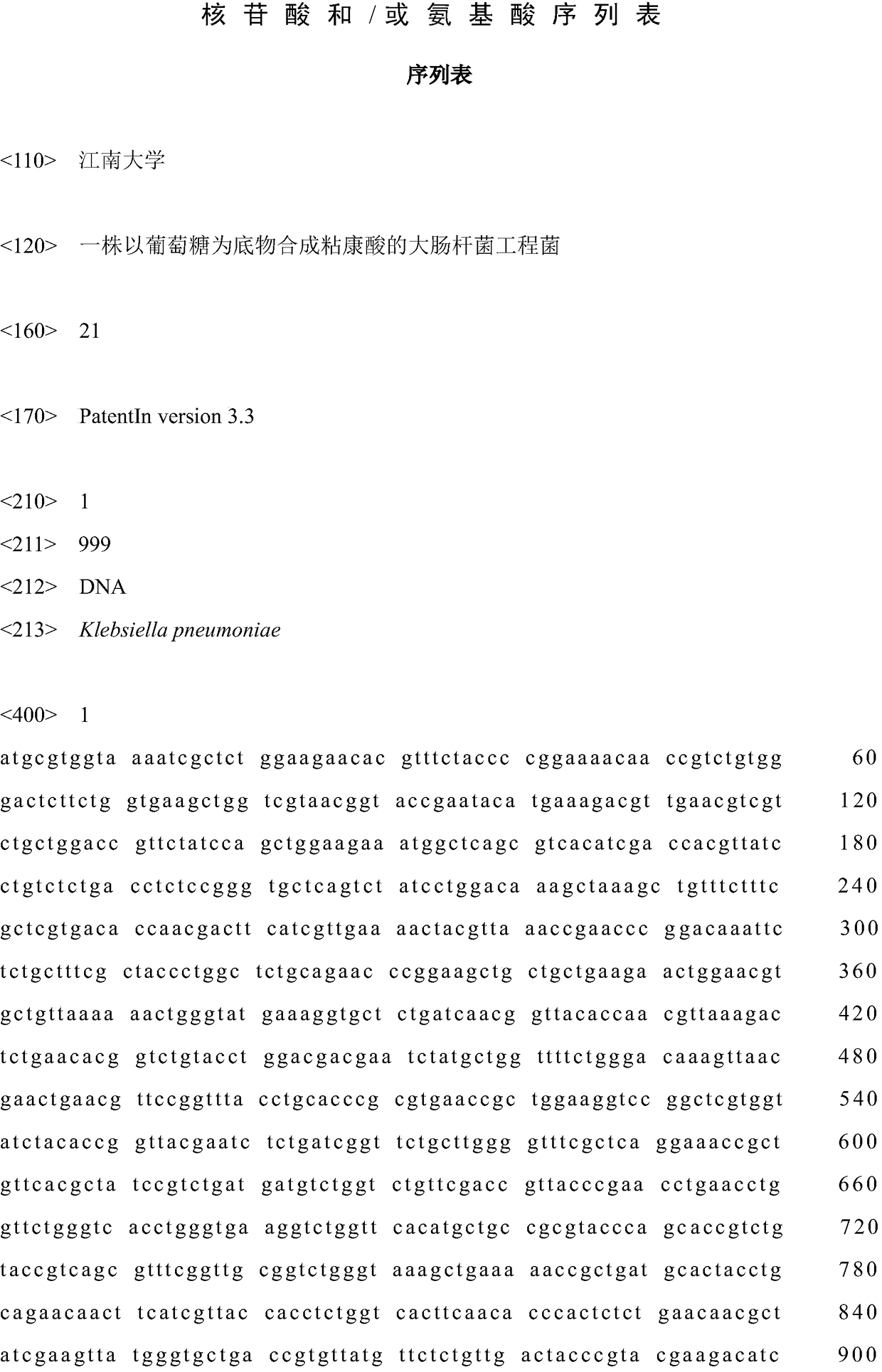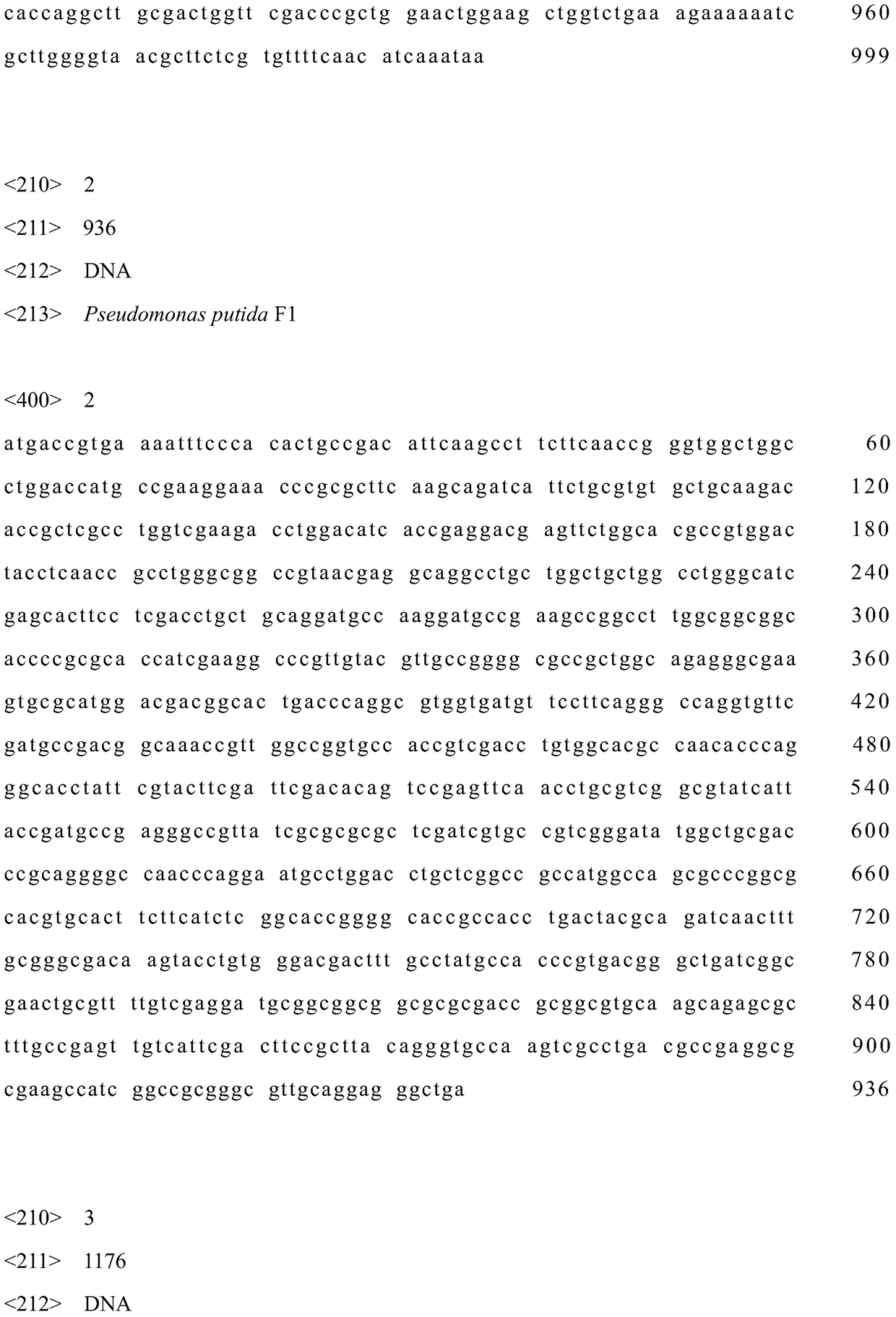A strain of Escherichia coli engineered to synthesize muconic acid using glucose as a substrate
A technology of Escherichia coli and glucose, applied in the biological field, can solve problems such as increasing difficulty, expensive shikimic acid, and increasing production cost of muconic acid, and achieves the effect of reducing burden
- Summary
- Abstract
- Description
- Claims
- Application Information
AI Technical Summary
Problems solved by technology
Method used
Image
Examples
Embodiment 1
[0060] Example 1 Construction of plasmids pACYC-XA and pET-XA.
[0061] PACYCDuet-1 and pETDuet-1 were used as co-expression vectors for the synthesis of muconic acid exogenous genes.
[0062] The entX (SEQ ID NO.1 encoding 2,3-dihydroxybenzoic acid decarboxylase) was cloned from the Klebsiella pneumoniae CICIM B7001 genome by PCR with primers A1 and A2; from the F1 genome of Pseudomonas putida by PCR with primers B1 and B2 The cloned catA (SEQ ID NO. 2 encodes catechol 1,2-dioxygenase). After the PCR products and expression vectors of the two genes were digested with corresponding restriction enzymes respectively, the DNA fragments were inserted into the corresponding digestion sites of pACYCDuet-1 and pETDuet-1 at the same time to obtain recombinant plasmids pACYC-XA and pET- XA.
Embodiment 2
[0063] Example 2 Construction of plasmid pRSF-CBA.
[0064] PRSFDuet-1 was chosen as the expression vector of entC and entBA genes. EntC (encoding chorismate isomerase) was cloned from the genome of Escherichia coli JM109 by PCR with primers C1 and C2; entBA (encoding isochorismate lyase and 2,3 were cloned from the genome of Escherichia coli JM109 by PCR with primers D1 and D2). -Dihydro-2,3-dihydroxybenzoate dehydrogenase). After the PCR product and the expression vector were digested with the corresponding restriction enzymes, the DNA fragment was inserted into the corresponding restriction site of pRSFDuet-1 to obtain the recombinant plasmid pRSF-CBA.
Embodiment 3
[0065] Example 3 Construction of plasmid pCDF-GL.
[0066] Choose pCDFDuet-1 as aroG fbr And aroL gene expression vector. This vector has double T7 promoters, and the presence or absence of foreign genes can be expressed through the addition of IPTG. 3-deoxy-arabinoheptulose-7-phosphate synthetase is abbreviated as DAHP synthase, composed of AroG, AroF, and AroH. AroG encodes AroG. Among them, AroG is feedback-inhibited by phenylalanine, and the method of site-directed mutagenesis is used (primers E1, E2, E3 and E4), the aspartic acid (GAT) at position 146 of AroG was mutated to asparagine (AAT) to obtain the mutated gene aroG fbr , Lifting the feedback inhibition of phenylalanine. aroL was cloned from E. coli JM109 genome by PCR with primers F1 and F2. After the PCR product and the expression vector were digested with corresponding restriction enzymes, the DNA fragment was inserted into the corresponding digestion site of pCDFDuet-1 to obtain the recombinant plasmid pCDF-GL.
PUM
 Login to View More
Login to View More Abstract
Description
Claims
Application Information
 Login to View More
Login to View More - R&D Engineer
- R&D Manager
- IP Professional
- Industry Leading Data Capabilities
- Powerful AI technology
- Patent DNA Extraction
Browse by: Latest US Patents, China's latest patents, Technical Efficacy Thesaurus, Application Domain, Technology Topic, Popular Technical Reports.
© 2024 PatSnap. All rights reserved.Legal|Privacy policy|Modern Slavery Act Transparency Statement|Sitemap|About US| Contact US: help@patsnap.com










